Contents
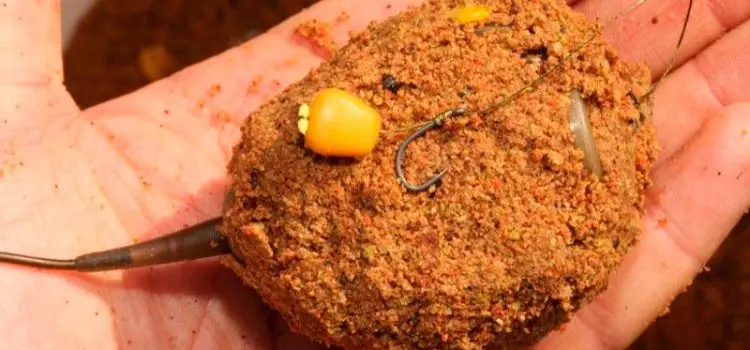
The spring and nipple are a type of tackle for catching fish from the bottom. The spring is two in one: a feeder and a sinker, although it is possible to use an additional sinker. If you take a nipple, then this is both a feeder and a sinker at the same time. Springs are used in many rigs for catching carp, carp, bream and other peaceful fish. The nipple has the same functions. The design of the spring is so simple that it can be easily made at home. The design of the pacifier is even simpler, as it is made by fishermen from improvised materials. As a rule, the basis for the manufacture of nipples is a regular plastic bottle cap. Despite its simplicity, both types of feeders have an enviable catchability.
How to prepare porridge for a spring
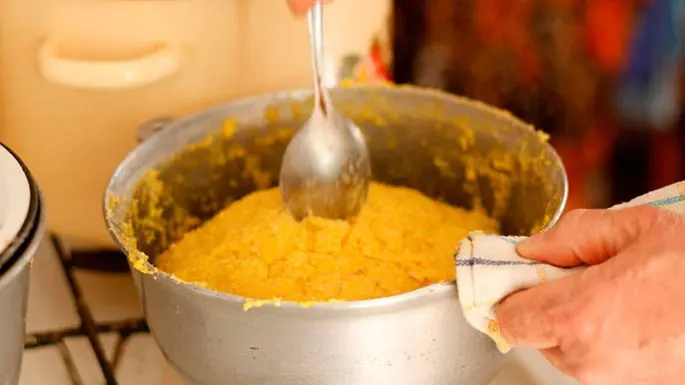
There are many options for preparing cereals for such feeders as a spring. However, there are recipes that deserve attention. Cooking cereals should be accompanied by a number of recommendations, taking into account the specifics of the equipment. For example:
- All kinds of flavorings can be added to porridge. At the same time, you should not get carried away, especially with artificial components, so as not to scare away the fish.
- It is very important to achieve the right consistency: it should not be too viscous or too crumbly. If the porridge is too viscous, it will not dissolve well in water, and if it is too loose, it will fly out of the spring at the moment it hits the water. Therefore, the preparation of porridge, although simple, but a crucial moment.
- It is permissible to add sunflower cake to any porridge, which will serve not only as a flavoring agent, but also as a baking powder. With it, you can adjust the density of porridge.
- In the process of cooking, you should make sure that the porridge does not burn, therefore, it is better to cook it on low heat, stirring constantly.
Recipes for the best cereals for spring
Millet porridge for teat fishing
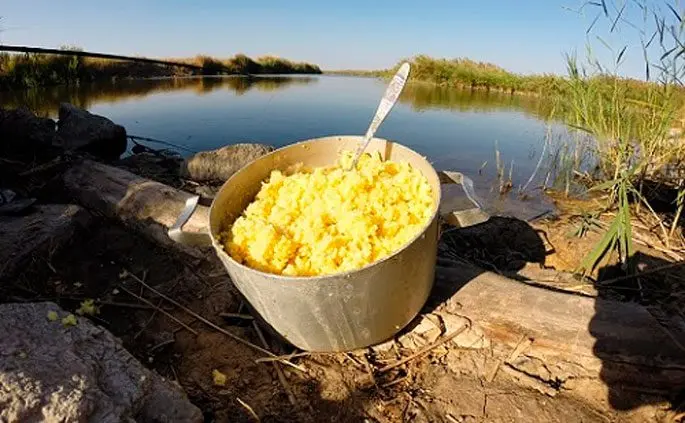
Millet porridge is considered one of the most popular as it is considered the most versatile bait. It is used when it is necessary to attract fish with small fractions. Most types of peaceful fish such as tench, carp, roach, crucian carp, etc. are caught on millet porridge.
The recipe is simple:
- A glass of water is poured into the container and brought to a boil.
- Two cups of cereal are poured into boiling water.
- Porridge is cooked for about 15 minutes, with constant stirring.
- After this time, the porridge is removed from the heat and infused for some time (until it cools).
- You can add a little compound feed to the porridge, which will increase its viscosity.
Millet porridge consists of small fragments that are quickly washed out of the spring. This factor must be taken into account and carefully tamp the porridge into the spring. Millet is also added to other cereals to obtain combined baits. Since millet is washed out much faster than other ingredients, it is able to create a food cloud to attract fish. Millet is added to corn or pea porridge, and also combined with wheat flour.
Super bait for plugs and springs. Bait for donkey. bait in the feeder
Pea porridge for spring fishing

Cooking pea porridge does not require much effort, but its preparation is more costly. As a result, you will get a catchy bait that will be of interest to many types of fish, especially bream. Every angler knows that bream is not indifferent to peas.
It is prepared as follows:
- 1 liter of water is poured into the container and one glass of peas is added. The container is placed on the stove, while the fire is reduced to a minimum.
- After the water boils, you need to make sure that the peas do not burn. To do this, it is constantly stirred.
- When the peas are cooked, you need to constantly remove the resulting foam. So the peas should cook for about 10 minutes.
- After 10 minutes, the fire increases, and the porridge is covered with a lid.
- After 5 minutes, half a teaspoon of soda is added to the porridge, followed by mixing the component. Soda allows the product to boil faster.
- As a result of cooking, peas turn into a liquid mass (it is digested). 100 grams of millet is also added here.
- After 10 minutes, sugar and salt are added to the porridge, one teaspoon each. The result is a more catchy bait.
- Finally, not a large amount of cake is added to the porridge.
Such porridge, by its consistency, is perfect for catching fish on a spring.
How to cook mastyrka from pea flour. Recipe for fishing for crucian, carp, bream…
Hominy (corn porridge) for fishing on a spring

Hominy is a porridge made from corn. Differs in catchability and simplicity in preparation. Corn porridge is loved by some types of fish, such as crucian carp, carp, carp, etc.
How is hominy prepared:
- First you need to take 300 grams of cornmeal and fry in a pan. At the same time, you need to control so that it does not burn.
- About 100 grams of wheat flour is also added here, after which the corn and wheat flour are fried further together.
- After an attractive smell appears, the flour mixture is poured with water. At the same time, the fire must be turned off, and water should be added in small portions.
- After 10 minutes, the porridge will turn into a thick viscous mass. If desired, you can add a little flour to the porridge.
- The porridge is removed from the stove and must be cooled down before further use. Then it is divided into 2 parts and placed in sealed plastic bags.
- The bags are placed in a container and filled with water, after which they are boiled for about half an hour.
- Hominy is removed from the fire and left like this all night. After that, the water is drained, the porridge is freed from plastic bags and cut into cubes or balls are formed from it, with which the spring is filled.
Super catchy hominy for fishing. Pacifier, cork, crucian killer.
Mixed feed porridge for spring fishing
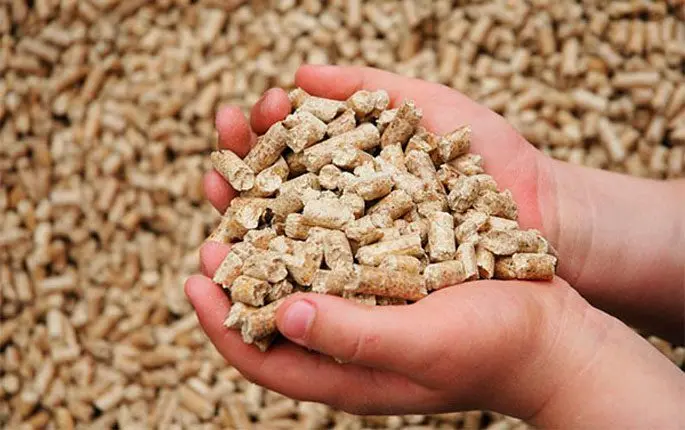
Compound feed is a mixture of waste products obtained during the processing of various grain crops. The cooking process is also not complicated, but it must be controlled. The main thing is to manage to get porridge of the desired density.
To cook porridge according to this recipe, you need:
- First of all, you need to boil potatoes in their skins.
- Pour 2 liters of water into a container, put on fire and bring to a boil.
- In the same container, a pound of compound feed is added and boiled for 10 minutes, with constant stirring.
- A crumb of rye bread is taken and added to the porridge.
- A couple of the largest potatoes are taken and mashed to a state of puree, after which it is also sent to porridge.
- A tablespoon of sunflower oil is added to the porridge and mixed thoroughly.
- Porridge will turn out more attractive if you add just a little vanillin to its composition.
If the porridge is cooked correctly, then you should get a thick, viscous mass, from which you can roll the balls and clog the feeder (spring) with them.
The simplest catchable bait for crucian carp, roach, carp, bream and chebak
Semolina porridge with hercules on a spring
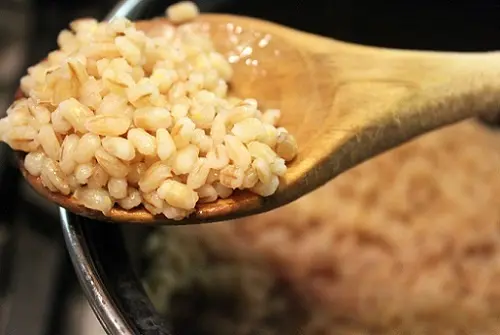
Semolina is added to many bait recipes, in addition, crucian carp and other fish of the carp family are actively caught on ordinary semolina. If you cook semolina porridge with hercules, you can get a universal bait.
Preparation is not complicated and consists of the following steps:
- Two glasses are taken and semolina is poured into one of them, about half, and water is poured into the other, a little more than half a glass.
- Water is sent to a container, which is put on fire. The water should boil.
- After the water boils, oatmeal is poured into the water, in the proportion: a teaspoon to half a glass of water.
- A teaspoon of sugar is also added here and mixed.
- After white foam appears on the surface, cooked semolina is poured into the container, moreover, not in large portions, with stirring.
- After all the water is absorbed, the porridge should be gently pressed down on top, and the container itself is placed in a towel and left in this state for 15 minutes.
- Then the whole mass is thoroughly kneaded so that there are no hard lumps.
- As a flavoring, you can add a couple of drops of anise oil.
The right millet for successful fishing. (cooking)
Recipes for cereals for springs for various types of fish
Porridge for crucian carp
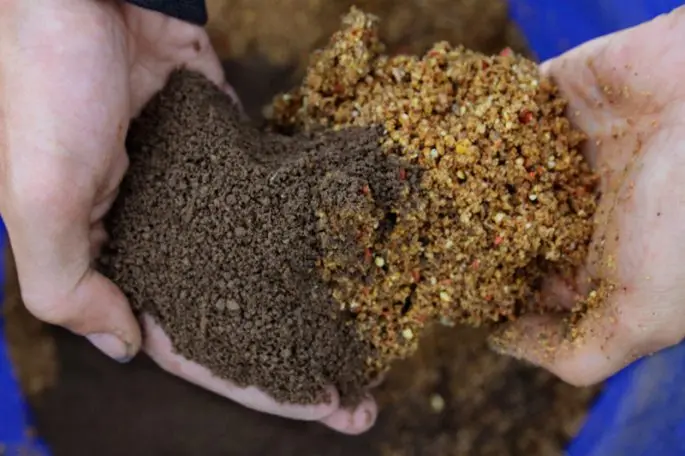
Carp is a fish that can be found in almost any body of water. There is even such a category of anglers as “cutters”. Crucian, like all cyprinids, may prefer corn porridge. It is prepared as follows:
- A saucepan is taken and water is poured into it and corn grains are poured, with the addition of a teaspoon of sugar.
- Corn is cooked for at least 2 hours, with occasional stirring.
- Once ready, it is allowed to cool to room temperature. Then it is passed through a meat grinder and mixed with animal feed.
- To make the porridge have an attractive aroma, you can add drops of anise, vanillin or chopped garlic to it.
Catchable porridge for carp and crucian carp !!! VERIFIED!!! Water test!!!
Porridge for carp
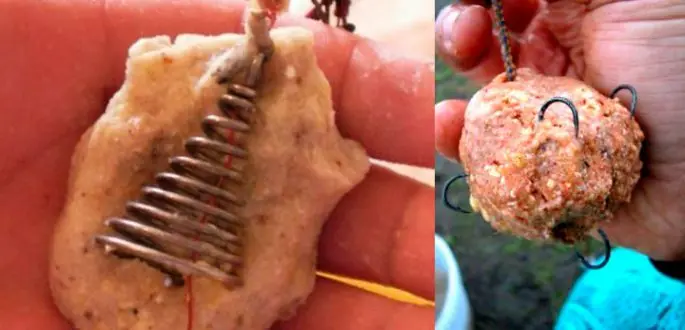
Such a feeder, like a spring, is also used for carp fishing. Catchy porridge can be prepared according to this recipe:
- 800 grams of peas are poured into a saucepan with water and boiled until a homogeneous mass.
- While the porridge is cooling, a bag of roasted seeds is taken and passed through a meat grinder.
- In the cooled porridge, 400 grams of semolina are gradually added with constant stirring.
- The porridge is stirred until it acquires the consistency of a solid dough. After that, crushed seeds are poured here.
- In conclusion, the whole mass is again thoroughly mixed.
The resulting porridge can be divided into several parts and decomposed into plastic bags. Porridge is stored for no more than 24 hours, after which it loses its attractive properties. In this regard, such porridge should not be prepared for long-term storage. It is suitable for single use.
Fishing. Groundbait for plugs and springs.
Lentil porridge

Cooking porridge for bream does not have any features, it just uses barley in its composition, and it is prepared like this:
- Pour 3 cups of water into a container and put on fire.
- When the water boils, several glasses of barley are poured here. Barley is cooked until it absorbs almost all the moisture.
- Millet groats, a tablespoon of vegetable oil and a little vanillin are also added here.
- The porridge is cooked until the remaining moisture disappears and small bubbling holes appear on the surface.
- The fire is turned off, and the porridge is removed from the stove and covered with a lid. Porridge should be infused for half an hour.
- After the porridge has infused and cooled down, semolina, barley grits and corn grits are added to it, about one glass each, depending on the consistency.
- The porridge is thoroughly mixed.
Groundbait for Trophy Bream and large white fish.
Features of fishing on a spring
Spring rigging
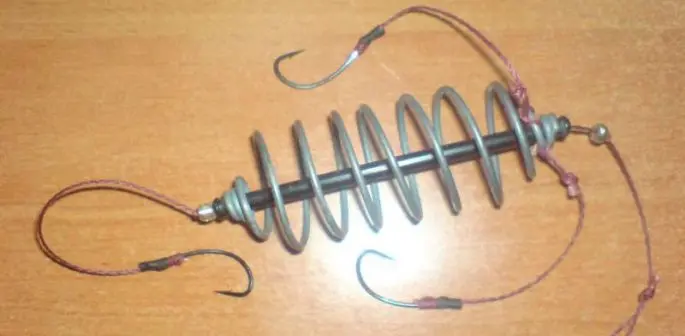
For effective fishing, it is necessary not only to have porridge that is tasty for fish, but also to properly equip the spring. At the same time, one should take into account the fact that the size of the spring is selected for a specific type of fish. For catching crucian carp, small springs are suitable, but for catching bream, and even more so carp, you need to choose more massive products. The universal tool looks like this:
- The main additional element of each equipment is a leash with a hook. There can be several of them in this equipment, from 2 to 6 pieces, about 5 cm long. Leashes must be strong and flexible. The main material is braided or kapron thread.
- The size of the hooks is also selected depending on the size of the intended production. As a rule, these are sizes Nos. 4-9.
- Sometimes an additional weight is used, so the leashes are attached directly to the spring.
- Additional sinkers can have a weight of 30 to 50 grams. As a rule, sinkers are attached to the end of the fishing line, and after it several springs are attached with leashes attached to them.
- The length of the rod can be about 3,5 meters, with a test of at least 40 grams.
- At least 100 meters of fishing line should be wound on the reel, with a thickness of 0,25 to 0,3 mm.
- The moment of a bite can be caught at the tip of the rod, but it is better to use a bite signaling device, both simple and electronic.
- The reel is inertialess, size 3000-4000 with baitrunner function.
Types of springs

There are 3 main types of springs, differing in shape, size and installation features. These include:
- The first type is the “donut”, which is a long spring coiled into a ring (donut). As a result of folding, a ring is obtained with a diameter of up to 50 mm, while the spring has a diameter of about 15 mm. One common leash is attached to such a spring, and additional leashes are attached to it.
- The second type is the “combine”, which has the shape of a conical spring. Leashes are attached at the top of the cone. This equipment is compact in size and easy to use, therefore, it can be recommended for beginner anglers.
- The third type is the “crucian killer”, which differs in the installation method. To eliminate the additional sinker, 3 springs are attached one by one. Each spring has its own leash with a hook. The distance between them is 12 cm. In some cases, especially when fishing on the current, nevertheless, it is not possible without an additional sinker. It is attached to the very end of the main fishing line.
Nozzles for fishing on a spring

Baits are selected taking into account many factors, such as the time of year, the preferences of the fish, as well as its type.
Not bad results can be obtained if you use such nozzles:
- Fresh or canned green peas.
- Fresh or canned corn.
- Oparishi.
- Bread crumb.
- Dung or earthworms.
- Insect larvae.
- Regular foam.
Spring with foam
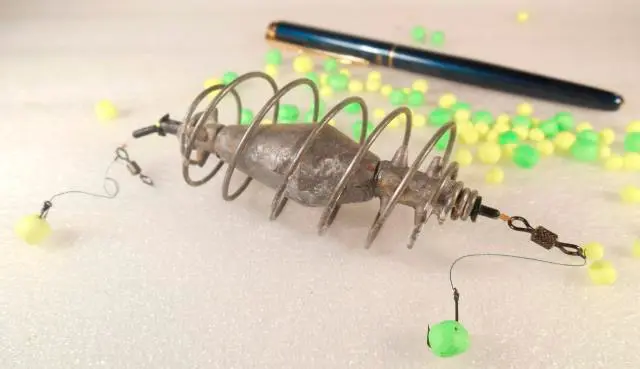
Quite often, fishermen use foam, or rather foam balls, mounted on hooks. This works especially when the reservoir has a very muddy bottom. Ordinary bait has time to sink in the mud even before the fish finds it. As for the foam, it will be in the water column, due to its buoyancy. Why the fish bite on the foam is not known here, as many fishermen, so many opinions. Styrofoam fishing technique is as follows:
- To begin with, the fishing point must be fed with porridge.
- A foam ball is placed on each hook, while the tip should be open.
- After that, the tackle is thrown to the right place.
Styrofoam fish can swallow accidentally. There is one more assumption about this. The fish still knows that Styrofoam is an inedible bait. And if so, then this is garbage that needs to be removed. She takes a styrofoam in her mouth and gets hooked. The fact is that the foam ball is always in the field of view of the fish. Since it is not in one place, but moves to the sides under the influence of the current, this greatly irritates the fish, and it tries to get rid of this irritant. At this point, she gets hooked.
Spring fishing in the current
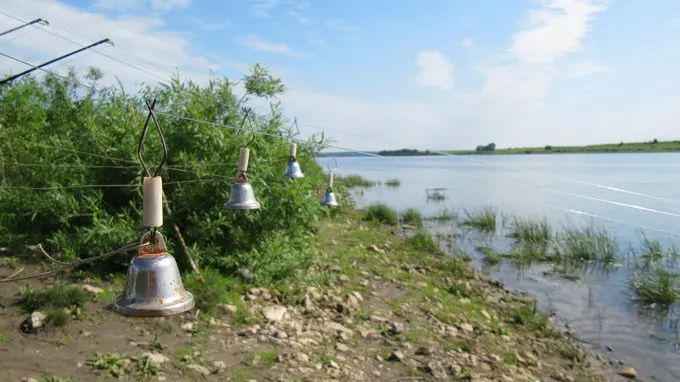
Fishing on the current, whatever the tackle, has its own characteristics. The presence of a current does not guarantee that the equipment will always fall into the same place, since the current moves both the sinker and the spring along the bottom, and with them the leashes with hooks. Feeding the same place, you should take into account the strength of the current, throwing bait in the same place. Having calculated the place where the bait stopped, you should throw the nozzle. At the same time, it is also necessary to take into account the fact that the bait is gradually washed away from the place where the fishing is carried out. Therefore, you need to regularly toss bait.
Fishing in the current requires the angler to:
- Accurate calculation of the weight of the spring so that it does not move along the bottom.
- Boil porridge of such a consistency that it can stay in the spring until it touches the bottom, plus another five minutes, but no more.
Catching fish in the current requires a lot of experience and knowledge from the angler. It is very important to choose the right perspective place.









